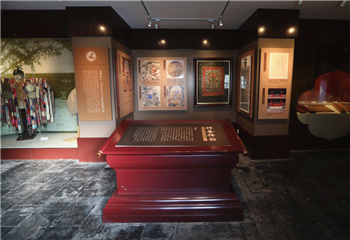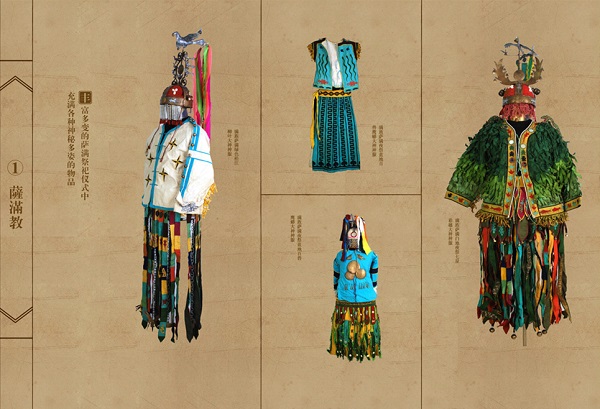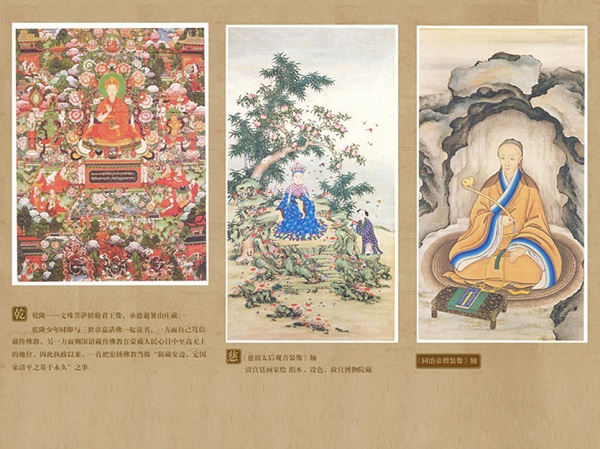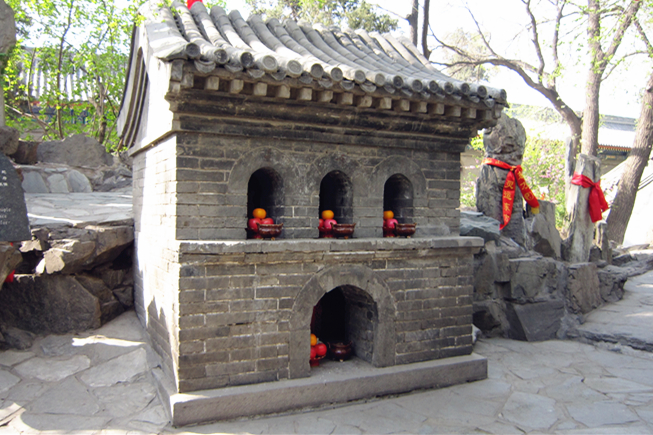

Exhibition hall of the Wuliang Studio on the first floor of the Rear Building
Location: Wuliang Studio on the first floor of the Rear Building
The exhibition comprehensively and objectively presents the religious activities that took place in Prince Kung’s Palace during the period of Yixin (Prince Kung) in the Qing Dynasty (1644-1911), with artifacts, photos, and historical documents. It covers the beliefs and worship of the mansion’s owners, who were known to practice Shamanism, Buddhism, and other religions.
Introduction
After entering the Central Plain, the Manchu Qing ruling class not only upheld their native Shamanism but also valued and accommodated Buddhism (especially Tibetan Buddhism), Taoism, and the traditional sacrificial ceremonies at temples of the Han people. This resulted in a social belief system characterized by the coexistence and harmonious integration of multiple religions.
Yixin, as a prominent figure in the late Qing political arena and a representative of the ruling class, practiced religion in his mansion, which was a prime manifestation of the ideologies of the imperial family at that time.
Shamanist activities at Prince Kung’s Palace
Shamanism is a polytheistic religion, and is considered the earliest and longest-lasting primitive religion in history. Its main content revolves around the worship of nature, animals, ancestors, and the corresponding ritualistic ceremonies. Shamanism has had numerous followers in Northeast China and Inner Mongolian since ancient times. To strengthen their rule, the Manchu rulers of the Qing Dynasty brought Shamanism to the Central Plain and established it as the state religion.

Signboard illustrating Shamanism
Qing Dynasty Buddhist activities in the imperial palace and princely residences
The Qing emperors attached great importance to Buddhism, especially Tibetan Buddhism. They practiced Buddhism with different levels of piety. Accordingly, owners of the princely residences held varying degrees of faith and reverence towards Buddhism. For example, Prince Zhuang (Yunlu), assisted his elder brother Emperor Yongzheng (r. 1723-35) and his nephew Emperor Qianlong (r. 1736-95) in various Buddhist projects.

Signboard showcasing Qing imperial family’s patronage to Buddhism
Indigenous religions and activities within Prince Kung’s Palace
As a representative of the late Qing aristocratic group, Yixin received a solid education on Han culture from childhood. Therefore, his religious beliefs were complex. He had his own personal faith, but his beliefs and actions also had to serve political purposes. As a result, the religious activities and content within Prince Kung’s Palace were rich and accommodating.

A structure in Prince Kung’s Palace for worshiping the spirits of weasels, snakes, foxes, and hedgehogs